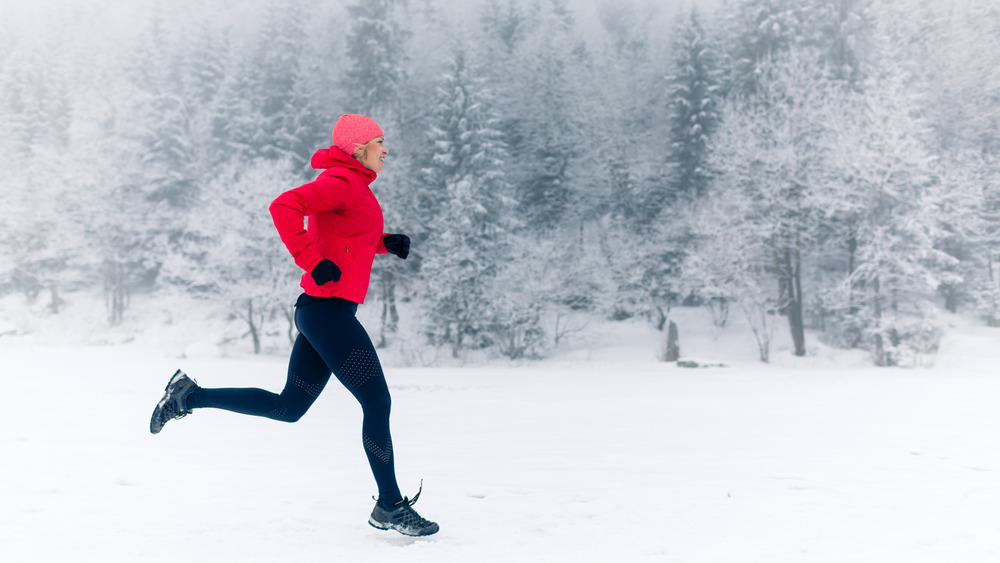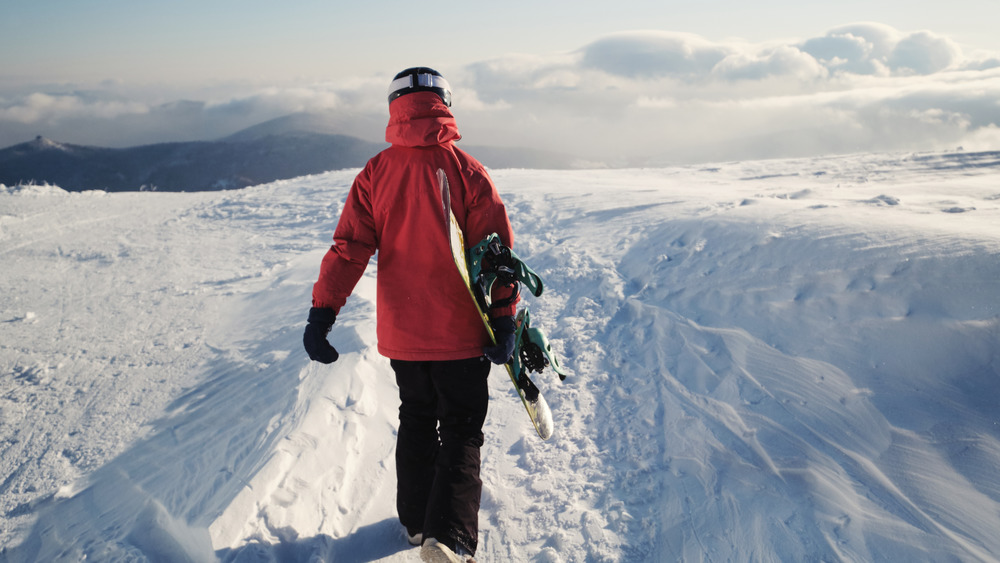Why You Should Try Exercising In Cold Weather
Don't let a little snow on the ground stop you from going on your run. There's evidence that shows you can burn more calories working out in the cold. Before you had warm homes with heating and insulated clothing, you were exposed to more cold weather. However, your body was (and still is) designed to burn a type of fat called "brown fat" to stay warm, according to a 2015 review published in The Journal of Clinical Investigation.
A 2017 study published in the American Journal of Human Biology had 53 men and women take outdoor education classes in cold weather and moderately high altitude for 12 to 16 weeks. The researchers measured everyone's total energy spent, dietary intake, muscle mass, fat mass, body fat percentage, and body mass before and after each class. Some exercised in temperatures of 15 to 23 degrees, others in temperatures in the 50s. The participants who exercised in the colder weather burned 34 percent more calories (via Today).
Meg Takacs, a trainer with Aaptiv, tells Healthline running in cold weather is better for your heart, and your heart rate will remain lower than if you were running in the heat. She says running with a lower heart rate will make you feel less exhausted and can make your run feel easier. In warmer months, your heart rate goes up as your body is trying to cool itself off. Takacs says running in the cold can be safer and help your performance.
How to exercise in cold weather
Some of the best cold weather exercises are running, jogging, walking, skiing, snowboarding, and snowshoeing, according to Mike Vaught, the director of personal training at Snap Fitness (via Healthline). He says because you can burn more calories in the cold weather, any exercise is good.
Stay safe while exercising in the cold by dressing warm and dry, wearing layers, protecting your head, feet, and hands, and checking the weather forecast. Wear reflective gear when it's dark outside, and choose footwear with good traction, so you don't slip and fall. Don't forget the sunblock just because it's wintertime. Wear a sunblock that protects against UVA and UVB rays, as well as a lip balm with the same protections. Wear sunglasses or dark goggles to protect your eyes from the sun's glare. Use waterproof workout gear to exercise while it's raining or snowing, which can start in the middle of your workout. Ask your doctor if it's safe for you to exercise in the cold, especially if you have a heart condition, asthma, or Raynaud's disease.
Avoid frostbite by checking the weather forecast. If the forecast calls for zero degrees Fahrenheit or colder temperatures or the windchill is negative 18 degrees Fahrenheit, keep your workout indoors on those days. Exposed skin can get frostbitten in 30 minutes or less. If you have any signs of hypothermia, such as intense shivering, slurred speech, fatigue, or loss of coordination, seek immediate emergency medical help.


